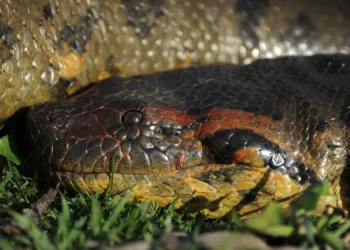A combination of climate change, deforestation, and fires has put immense strain on the Amazon basin — home to the single largest remaining tropical rainforest in the world, housing at least 10% of the world’s known biodiversity — since the early 2000s. A new study suggests that over three-quarters of the Amazon region is showing signs that rainforests may be nearing a tipping point, where they could turn into a savannah.
“There is a lot of discussion about the future of the Amazon rainforest and its tipping point. This comes from model studies that originally showed a fast loss of the Amazon rainforest. Since then there has been a lot of uncertainty about its future based on models not agreeing with each other, different future scenarios of climate change, etc. This leads us to look at the real world Amazon to actually see what is going on, and why wouldn’t you if the data is there? We use well-established indicators to measure the changing resilience of the forest, finding that 75% of the forest is losing resilience,” Chris Boulton, Associate Research Fellow at the University of Exeter in the UK, told ZME Science
R(1) values at each location are measured over time and approximate how much memory the forest has (how similar the forest is compared to how it was previously). Higher values suggest more memory, meaning the forest is responding more slowly to weather events, having lower resilience to them. Over the years, the increasing AR(1) values at individual locations, as well as the average behaviour over the region (shown by the time series) shows that there has been a loss of resilience in the Amazon rainforest, particularly over the last 20 years. Credit: Boulton, et al.; Nature Climate Change
Resilience, Boulton added, refers to an ecosystem’s ability to recover from strenuous events such as droughts. Monitoring ecosystem resilience is paramount because it can help determine the magnitude and timing of ecological interventions, such as environmental watering, as well as provide trajectories we can expect in highly disturbed ecosystems subject to ongoing change. And few regions across the world are under as much stress as the Amazon basin is currently experiencing.
Aggressive modern human economic invasion in the area over the past decades has supplanted once tropical foliage with roads, dams, cattle farms, and huge soy plantations. Adding insult to injury are the hundreds of wildfires that lit large chunks of the iconic rainforest up in flames. In 2020 alone, fires razed more than 19 million acres of the world’s largest tropical forest.
With the forest habitat shredded, many endemic species are under threat of extinction, their previous role being filled by often invasive animals. For instance, we’re seeing giant anteaters being replaced by rats and Brazil nut trees making way for weeds.
Using remote satellite sensing data, Boulton and colleagues modeled changes in the resilience of the Amazon rainforest between 1991 and 2016, coming to some stark conclusions. The analysis revealed that 75% of the Amazon has been steadily losing resilience since the early 2000s, which in simple terms means that the rainforests are finding it increasingly difficult to recover after a big drought or fire.
“I think the biggest challenge with this work was the amount of robustness checking that needed to be done. To have such a striking result, all of our coauthors had to be confident that what we were seeing stood up to various tests,” Boulton said.
These concerning developments suggest to the study’s authors that the Amazon may be approaching a critical threshold. Once crossed, key regions of the Amazon may irremediably transition into a new state, from luxurious rainforests to savannas.
The loss of resilience is most prominent in areas that are closer to human activity, as well as in regions that receive less rainfall. That was to be expected. But what was particularly surprising was finding loss of resilience did not necessarily overlap with loss in forest cover. That’s worrisome because it suggests ecosystems that look to be doing well from up above may be actually more vulnerable to changing their mean state than previously thought.
“On the surface, the Amazon may appear comfortable (by looking at the state of the forest), but you need indicators like the ones we use to really see its health. There is a section in the new IPCC report regarding the ‘committed response’ of the Amazon; that in the future, the Amazon may appear stable but the climate it is experiencing may not be good enough for it to survive. Because the forest overall responds slowly to change, it may have passed a tipping point without being realized from the outside,” Boulton said.
The study did not attempt to offer a timeline for this possible transformation of the rainforests. When such a threshold could be reached if things continue business as usual is a big enigma at this stage. But these alarming findings suggest that, if ecosystem resilience is any indication, the Amazon basin is heading towards this critical point of no return. Furthermore, the level of uncertainty is compounded by the many dependencies that characterize such a complex ecosystem like the Amazon.
“Losing part of the forest will also affect rainfall in other areas, which could create losses of resilience in areas where we do not see it at the moment. As for when, I think this is tough to answer, I am surprised to see these signals now over such a large area, and if others are too then it could give people a wake-up call to do something about it,” Boulton said.






